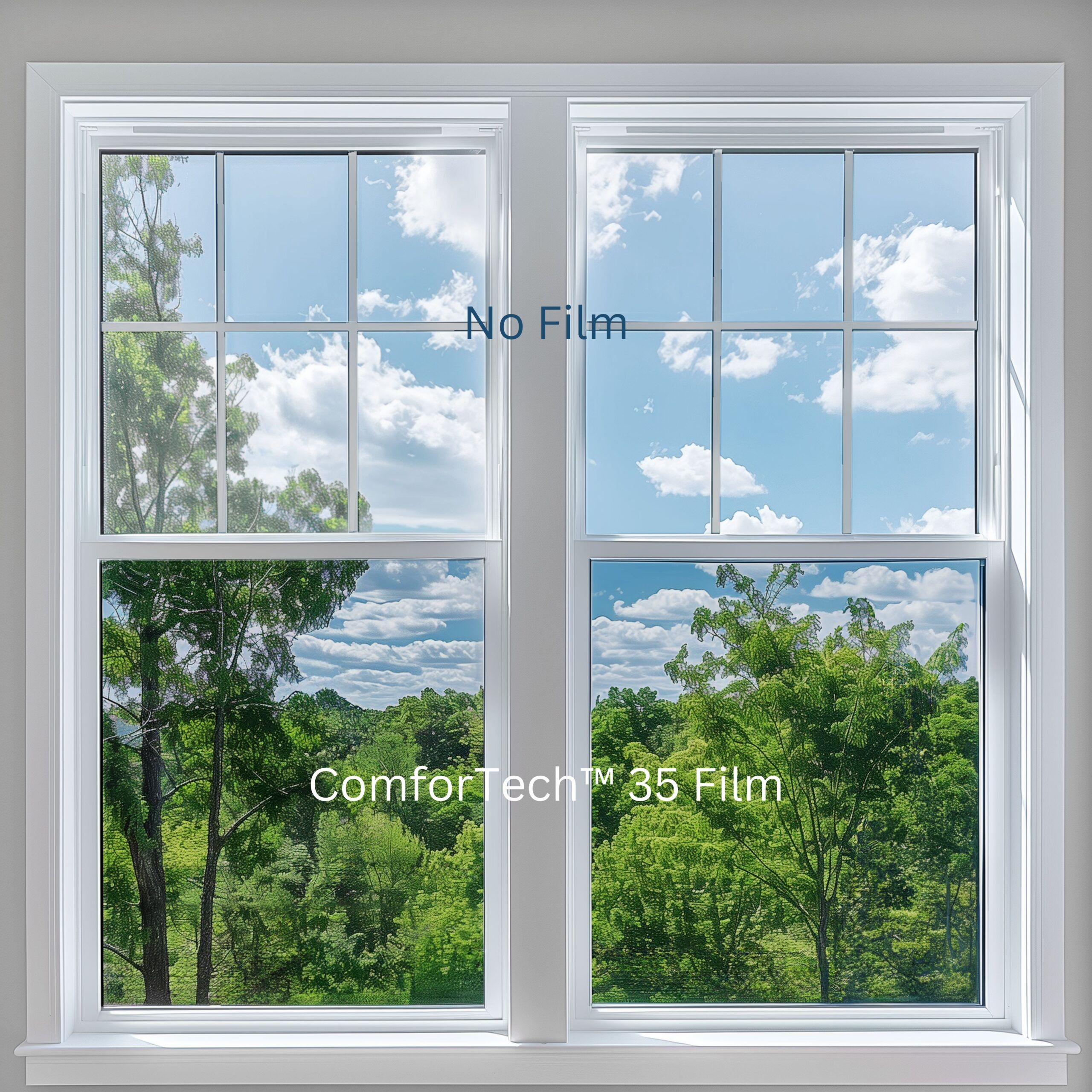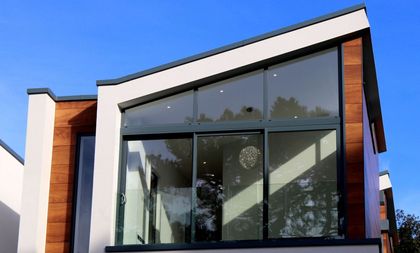Budget-friendly Residential Window Tint Options for every single Budget
Budget-friendly Residential Window Tint Options for every single Budget
Blog Article
Just How Residential Home Window Tinting Improves Your Home's Power Effectiveness
Residential home window tinting presents a compelling option for homeowners looking for to enhance energy effectiveness within their space. By applying specialized films to home windows, it efficiently reduces heat transfer, thereby maintaining interior temperature levels and minimizing the demand for extreme heating or cooling. This not just reduces power intake yet additionally supplies an extra comfortable setting by reducing glare. Recognizing the subtleties of exactly how tinting jobs and picking the ideal type for your home can be crucial. Oddly, what factors should one think about prior to making this financial investment?
Understanding Home Window Tinting
Comprehending home window tinting is crucial for house owners seeking to improve both comfort and power performance in their space. Residential Window Tint. Home window tinting entails the application of a thin film to the interior or outside surface of glass windows. This movie can dramatically modulate the quantity of sunshine and warmth that gets in a home, hence influencing indoor climate conditions
There are numerous kinds of home window tinting films offered, each with distinctive residential properties. Dyed movies soak up solar power, while reflective films deflect it away from the glass surface. Ceramic films use an equilibrium of visibility and heat being rejected, making them a preferred choice among home owners. The effectiveness of home window tinting is frequently determined by its Visible Light Transmission (VLT) percent, which suggests just how much light can travel through the movie.
Advantages of Power Effectiveness
Window tinting not just boosts aesthetic appeals however also plays a considerable function in boosting power effectiveness within domestic spaces. By reducing warm transfer through home windows, colored movies produce an extra stable interior climate, which can lead to considerable decreases in energy intake for cooling and heating. This energy performance translates right into reduced energy costs, supplying house owners with substantial long-term financial savings.

In addition, window tinting enhances the comfort of living areas. By reducing glare and obstructing dangerous UV rays, tinted home windows develop a more enjoyable atmosphere, which can bring about enhanced well-being for owners. The protection against UV rays likewise helps protect furniture and floor covering from fading, contributing to the longevity of house things.
Just How Tinting Works
Tinting movies operate with a combination of innovative products and technologies designed to control the quantity of solar power getting in a home. Mainly made up of polyester, these movies commonly include metal or ceramic bits that absorb and mirror warmth. This dual capability enables them to dramatically lower the penetration of ultraviolet (UV) rays and infrared radiation while permitting visible light to go through.
The performance of window tinting is measured by its solar warm gain coefficient (SHGC), which suggests exactly how much solar power is transmitted with the home window. Reduced SHGC worths are more effective as they represent higher heat rejection. In addition, window colors can feature a range of tones, allowing property owners to tailor their visual choices while enhancing energy efficiency.
Furthermore, these films act as a barrier, stopping warm loss throughout colder months by showing indoor heat back right into the space. This thermal insulation effect enhances the cooling benefits acquired throughout warmer months, contributing to a well balanced interior climate year-round. By handling solar power successfully, household home window tinting not just improves convenience however likewise plays an important function in lowering energy usage and decreasing utility expenses.
Picking the Right Color

There are numerous sorts of window films readily available, including colored, metalized, and ceramic. Colored movies are affordable however might have restricted resilience. Metalized films supply far better heat being rejected but can interfere with digital signals. Ceramic films supply excellent warmth control without jeopardizing exposure and are very long lasting, making them a preferred option.
Visible light transmission (VLT) is an additional crucial variable, as it indicates the quantity of natural light that can travel through the tinted glass. House owners ought to choose a look at these guys color with a VLT that matches their lights preferences while still offering ample glow reduction.
In addition, analyzing the solar warmth gain coefficient (SHGC) can assist establish how well a tint can obstruct warmth from sunshine. A lower SHGC suggests better warmth control, eventually improving energy effectiveness.
Installment and Upkeep Tips
Proper setup and maintenance are crucial components in optimizing the benefits of residential home window tinting. To achieve optimal results, it is recommended to hire a qualified professional for installation. This guarantees that the color is applied correctly, staying clear of air bubbles, wrinkles, or misalignment that can endanger efficiency. Experts likewise use specialized techniques and devices, which can improve the resilience and efficiency of the color.
Adhering to installment, upkeep is essential to prolong the life of the window film. It is advised to wait at the very least 30 days prior to cleansing the colored windows to allow the sticky to cure completely.
Addressing these concerns immediately can stop further damage and keep energy efficiency. By sticking to these installation important source and maintenance tips, homeowners can guarantee their window tinting continues to supply significant energy cost savings and convenience for years to come.
Final Thought
Finally, residential window tinting acts as an efficient solution for enhancing energy performance within homes. By reducing warmth find here transfer and blocking dangerous UV rays, home window movies add to reduce power usage and enhanced indoor convenience. The choice of suitable tinting materials, along with appropriate installation and upkeep, even more takes full advantage of these benefits. Inevitably, home window tinting represents a sustainable financial investment that not only reduces energy bills but also promotes a comfy living setting throughout the year.
Home window tinting involves the application of a thin film to the inside or outside surface area of glass windows. By reducing heat transfer through home windows, colored movies develop an extra stable interior environment, which can lead to significant decreases in energy consumption for heating and cooling.The efficiency of window tinting is determined by its solar warmth gain coefficient (SHGC), which shows how much solar power is transmitted via the window. By handling solar power efficiently, household home window tinting not just enhances comfort but additionally plays a vital function in minimizing energy consumption and reducing energy costs.
By decreasing heat transfer and blocking hazardous UV rays, window films contribute to reduce power consumption and enhanced interior convenience.
Report this page